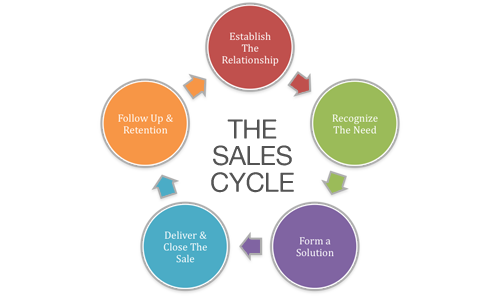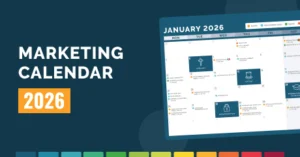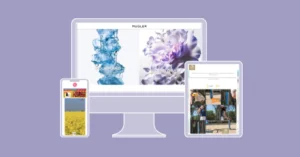How to boost your sales with retargeting campaigns
You want to boost your sales and have decided to go into a retargeting campaign? Great idea! Retargeting consists in targeting a user who visited your website but didn’t convert. Used properly, this technique can be useful as it allows you to adapt your ad to your visitor’s profile. In this article, we give you four golden rules to make your retargeting campaigns a success.
Retarget the right audience
Each user you will retarget is different. Segmentation is an effective way to offer personalised communications to your audiences. According to your business and objectives, users can be segmented based on various criteria:
Behaviour
Your users visit your website for various reasons and their online behaviours differ. Ideally, you won’t display the same advertising campaign to someone who visited a vacuum product page as to someone who spent some time on your repair services page. Pages viewed, duration and frequency are possible criteria that will allow you to determine the right message to deliver.
All visitors aren’t at the same stage of the sales process. The most interesting users to retarget are the ones who put your product in the basket, but leave your website without completing the purchase. They almost did but something held them back, so it should be easy to convert them. Encourage them to make the leap by retargeting them with the products they seemed to be interested in.
There are also users who visited your website for the first time, and who are at the beginning of the sales funnel. At this stage, your ad campaigns will mostly seek to increase brand awareness and encourage visitors to come back to your website, instead of highlighting a particular product.
Finally, there are frequent visitors. They like your brand but hesitate to buy. You should encourage them to purchase using promotions, for example.
Indeed, timing is critical, as much for the user as for your campaign. If you want to retarget a user who recently visited your website, do it quickly! They’re probably looking for better prices or products that best suits their needs, and are likely to visit similar websites. Catch their attention before they decide to purchase from a competitor!.
Language and country
Obvious but useful reminder: the language of your ads should match your prospect’s one. Their country should not be neglected either, because the products that you want to highlight are not always the same in each country.
Devices
Let’s say a user exclusively browses from their mobile. It would be a pity for them to miss your message because it isn’t mobile-optimised. Make sure your ad is responsive to all formats: mobile, tablet and desktop.
Tastes and purchase preferences
The ideal is to adapt your messages based on your prospects’ preferences. So how can you know? For that, interactive campaigns are your best allies: by participating, through quizzes and personality tests, users will provide precious information on their preferences.
For example, if you work for a travel agency, a personality test such as “Where will be your next destination?” will allow you to create segments based on travel types. It will only be necessary to target your advertising message according to the destination that will come out of the personality test. Bingo!
Exclusion
You can also exclude some prospects from your advertising messages. For instance, you don’t want to target users who already purchased the product that you are trying to sell them. Same goes for the prospect themselves: if they ended up taking insurance from you, they don’t want to keep receiving emails about special offers on that same insurance. To avoid that, we highly recommend the use of a burn code. This piece of code, inserted in your post-purchase page, will unlist the user from the list of users to retarget.
Also, make sure to avoid spams and users who only stayed for a few seconds on your website.
Find the right moment
The first question is to know how much time your campaign will last. It will first depend on your sales cycle length. The purchase of a car will take more time than the purchase of a t-shirt for example. Your cycle can be short (3-7 days) or long (60-90 days). If you have any doubt, do not hesitate to test which length converts better (importance of A/B testing (we will discuss this topic further).
Next is, how often should you send the message? How to catch the user’s attention without harassing them? An overexposure of your campaign could easily ruin it, yet you don’t want it to go unnoticed. The frequency will depend on your objectives and the location of the user on the sales cycle (hence the importance of segmentation).According to Retarget, 17 to 20 impressions per month can suit most retargeting campaigns.
Find the right channel
The choice of the channel also influences the effectiveness of your retargeting campaign. Which one will be the most suitable to promote your products? Think about your objectives and the nature of your activity. For example, for B2B relationships, LinkedIn will be privileged over Facebook. Indeed, the “personality” of each channel influences the message you are going to deliver.
Send the right message
First, the design. To draw attention, avoid overloading your advertising. Use a logo and pay attention to colour consistency. The call-to-action should be highlighted by being visually distincts from the rest.
Then, your message should always be customer-oriented, focused on their problems and how your product can solve them. According to your objective, the message should be sales and promotion oriented (for recent visitors for example) or aimed to increase brand and product awareness (for new visitors).
Another important thing is to rotate your ads. Users may end up wearied if you always use the same creatives and the same message throughout the campaigns. According to a study led by Retarget, click-through rates are halved after five months of the same campaign and creatives. Try to have several creatives for each ad, and add new ones regularly to bring freshness and avoid the user ignoring your ads.
Don’t forget to guide your visitors on your channels. Driving them to the homepage of your website and hoping that they will browse to the pages they are interested in is not a good option. However, highlighting the pages they are likely to be interested in, could prove effective. If during their last visits, the user spent time on the vacuum product page, then drive them to this same page. Another option would be to send them to landing pages specially created for your retargeting campaign.
To adapt to each channel, create different formats for each ad. For your information: a Google guide lists the most performing formats. 😉
And then?
Finally, A/B test your campaign. It will help you improve your creatives and give concrete insights on how you can do it:
- The format of your creatives
- The design of your creatives
- The messages of your creatives
- The page to which the user is directed
- The Call-To-Action
- …
If you take into account all the elements above, then your retargeting campaign has all the assets and should succeed in boosting your sales. Many platforms can help you to achieve your strategy, such as Adroll, Criteo, Facebook Custom Audiences with Facebook Pixel and Google Adwords with their remarketing services.









